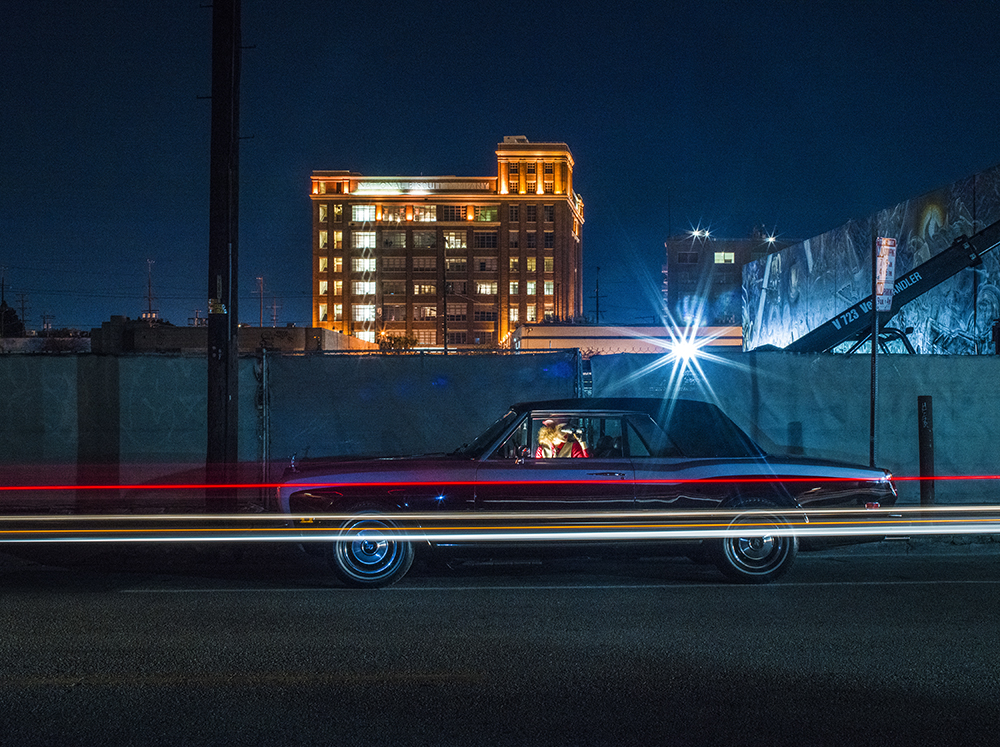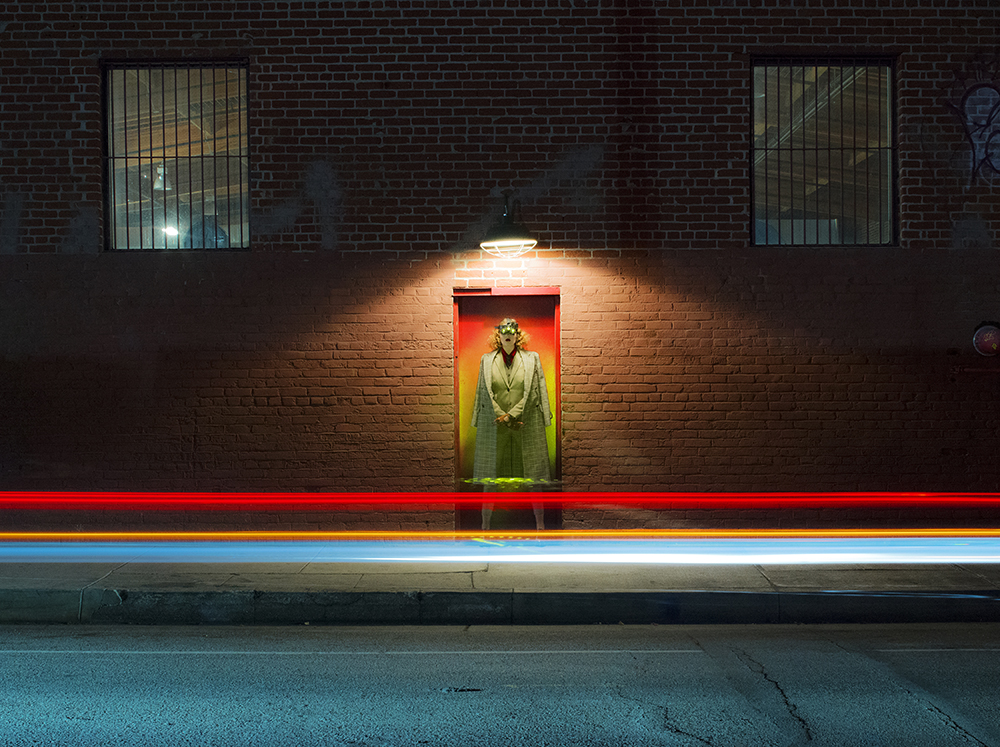Images of violence are so prevalent in today’s media landscape that news commentators now prompt us to look away, while social-media clips of police misconduct or war-ravaged bodies are shared and reposted, implying that we might take voyeuristic pleasure in viewing them. Melanie Pullen was certainly aware of our collective fascination with morbidity 20 years ago when she produced her series “High Fashion Crime Scenes,” staged photos based on actual forensic records and documentation of pre-1950 “Jane Does:” murders or suicides that were never solved. A lover of film noir and French New Wave cinema, Pullen hired a film crew to realize her scenes with elaborate lighting and staging over month-long shoots. To underscore her premise that the entertainment industry glamorizes violence, she dressed her models, posed as corpses, in expensive designer clothing and accessories.
Six of these photos were included in Pullen’s new exhibition at William Turner Gallery, along with four from a more recent 2018 project, “Voyeur.” While both series are highly seductive in their use of color, mood and narrative implications, they differ in other ways. In the cold-case scenes, Pullen’s femmes fatales are victims, while in the newer works they are active protagonists equipped with binoculars, their intentions either heroic or villainous. While the earlier group encourages viewers to act like private detectives as we imagine what took place, the models in some of the newer works look directly back at us. We are no longer investigators: We are the watched.

Melanie Pullen, The Watcher (Voyeur Series), 2018 Inkjet archival print, mounted on aluminum, Courtesy William Turner Gallery.
Part of the appeal of Pullen’s photographs is that they use intense or obscured lighting to focus or divert our attention in the way a cinematographer would. In Yellow Cab and Yellow Street (both 2003), the dead bodies emerge before us gradually, their silhouettes barely detectable amid darkness which contrasts sharply with brightly illuminated areas of yellow. Conversely, the corpses in Untitled (2004) and Ferris Wheel (2004) are well-lit and positioned in the lower foregrounds to lure us into each scene. The green-tinted untitled work, which takes place in a metro station, exudes an uneasiness, as three possible escape routes for the murderer—a train and two escalators—would normally be moving but appear paused mid-motion, creating an uncanny sense of quietude. Meanwhile, Ferris Wheel conjures associations with familiar movie lore. The view of Pacific Ocean Park in the background recalls the setting for attempted murder in Alfred Hitchcock’s Strangers on a Train (1951), while the victim’s red garment suggests the comedic heroine from Gene Wilder’s The Woman in Red (1984).
Lighting also plays a pivotal role in dramatizing the “Voyeur” series. Los Angeles’ drive-by culture is referred to in colorful streaks from car lights that create visual barricades in The Stalker and The Watcher (both 2018). More importantly, the women behind the binoculars in She Sees Everything (2018) and Watcher, in Red (2018) are dressed to the nines and appear powerful, confident and fearless. With her subjects now looking like Barbie’s still carefully coiffed but newly self-actualized heroine, Pullen is clearly in step with the cultural shift catalyzed by the “Me Too” movement.


